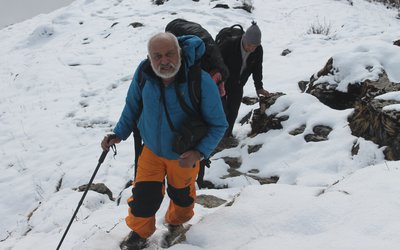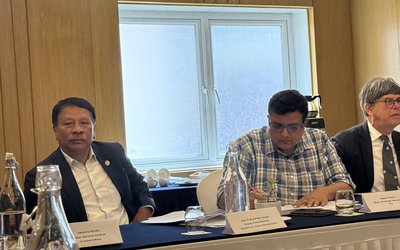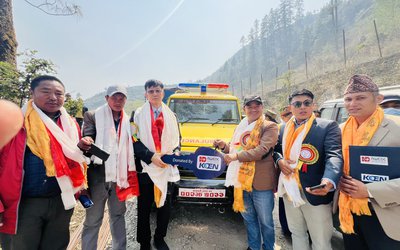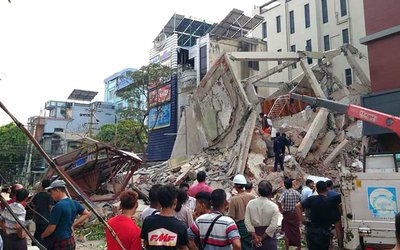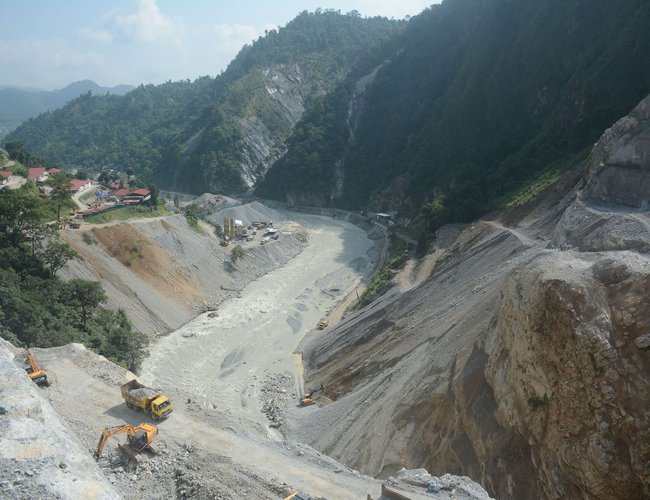
Unilateral socio-economic development accelerated consumption of pristine natural resources. Fossil fuel-based industrial development, transportation and infrastructures increased environmental pollution and greenhouse gas emissions. Pollution accelerated risks and threats to human health and pollution-induced death compelled human being to clean its mess to protect life and its supporting system. Concerns on the need for protecting environmental resources for 'human survival'took appropriate rooting in the 1970s.
Rich countries initiated a process to make the socio-economic and infrastructure developmentenvironment-friendly. They developed a tool, popularly known as Environmental Assessment (EA) - Initial Environmental Examination (IEE), Environmental Impact Assessment (EIA) or other forms of assessment - to assess impacts of a project on the environment. This is a 'predictive' tool that uses science in identifying, predicting, and evaluating impacts and selecting measures to avoid, reduce or compensate impacts, and an art in managing those impacts and measures. Effective implementation of this tool has contributed to make the development and infrastructure environment-friendly in several countries. However, this tool has been made complicatedin Nepal over the years.
Nearly three decades of experience in legally approving IEE and EIA report of the prescribed projects informs mixing of identified and predicted impacts, and non-evaluation of their significance. Measures proposed to offset environmental impacts look generic. EA reports neither include impacts that are grouped into identified, predicted, and evaluated nor measures that are specified for avoiding, mitigating, or compensating the adverse impacts. Similar situation exists on compliance and impact monitoring.
Nepal's EA report follows the formats as prescribed in the Environment Protection Rule (2020). The report not only includes benefits augmentation and adverse impacts mitigation measures but also provisions for environmental monitoring and auditing. However, state of implementation of EA reports of several projects is unclear. Continuous repetition of similar impacts and measures in projects of different ecological zones undermines the area- and resource-specific impacts and practical measures. Limited or non-implementation of measures does not informtheir effectiveness. Nepal has completed 'fitting of wires', that is, preparation and approval of EA report of the prescribed projects by complying with the legal provisions, but 'current is yet to release for the proper use of the wire'. It means legally approved EA reports must be implemented to enjoy the benefits of this tool.
Many countries, bilateral and multilateral agencies have institutionalised the need for ensuring environmental safeguards. The safeguards can be ensured through EAs. In Nepal, Environmental Protection Act, 2019 (which repealed 1996 Act) and its Rules (2020) prescribes details on type and approval of project level EAs. In addition, projects to be implemented with support from the World Bank and the Asian Development Bank should comply with the national legal requirements and their environmental safeguard provisions. The Nepal Rastra Bank (NRB) has issued a Guideline on Environmental and Social Risk Management (ESRM) for Banks and Financial Institution in February 2022. This guideline urges, inter alia,to implement environmental and social management system. NRB has included monitoring and control provision in its guideline to ensure appropriate risk mitigation measures in lending portfolio and avoid financial transactions that result to unacceptable environmental and social impacts.
Several funding agencies, including the Green Climate Fund (GCF), have introduced environmental safeguards for their funded projects. These global and national initiatives in making development projects environment and climate-friendly are sufficiently grounded but again implementation of these provisions indicate that 'best wiring is completed in a building' but 'current is unavailable' which makes the building dark. Nearly three decades of experience in using EA tool legally rather provides several examples of non-implementation of environmental safeguard measures. Several projectshave not complied with the environmental provisions, and project-induced environmental degradation is increasing.
Project-based EA reports must be location-specific and factual. EA report must include project-specific impacts with practical mitigation measures which should be implemented, monitored, and audited. Environmental monitoring and auditing provide the state of compliance and effectiveness of measures. Knowledge on timing of impacts happened and effectiveness of measures helps to rectify impacts in similar projects.
Increasing trend of implementing environmentally sensitive projects within the national parks and wildlife reserve, in forests of scientific and ecological importance, and within cultural and historical sites has accelerated threats to natural and cultural resources. If the government intends to implement environmentally sensitive infrastructure and other projects within a national park, it can degazette the national park, and implement the project. Competent authorities should understand the importance of national parks and wildlife reserves. Recalling the case of East Rapti Irrigation Project (ERIP) planned for Rapti River diversion near the Chitwan National Park, EIA study recommended to reformulate the project and proposed for farmer's managed irrigation scheme rather than diverting the Rapti river by a constructing a dam. Conservation NGO in late 1980s during Panchayat regime were instrumental in stopping the river water diversion that affects the national park. In recent years, conservation NGOs in Nepal are silent about the proposed construction of an airport in a pristine forest, and a dam and water infrastructures in the national park etc.Approach of benefitting from privatising the public resources, including footpath prevails in Nepal.
EA does not block the development but makes every effort to make it environment-friendly and sustainable. Although EA is deeply and legally rooted in Nepal for the prescribed projects, four and half-decades of involvement in advancing its use compelled to thinkEA for Nepal a 'wire without a current'.

Batu Uprety
Former Joint-Secretary and Chief of Climate Change Management Division, Ministry of Environment (then), and former Team Leader, National Adaptation Plan (NAP) formulation process. E-mail: upretybk@gmail.com
- Sagarmatha Sambad: Likely Bearing the Fruits
- Mar 27, 2025
- Decadal Experience In Preparing The NDC
- Mar 03, 2025
- Over Five Decades Of Concern On Air Pollution
- Jan 16, 2025
- Damaging The Functional EIA Track
- Dec 22, 2024
- Baku CoP29 Outcomes And Nepal's Initiatives
- Nov 26, 2024

